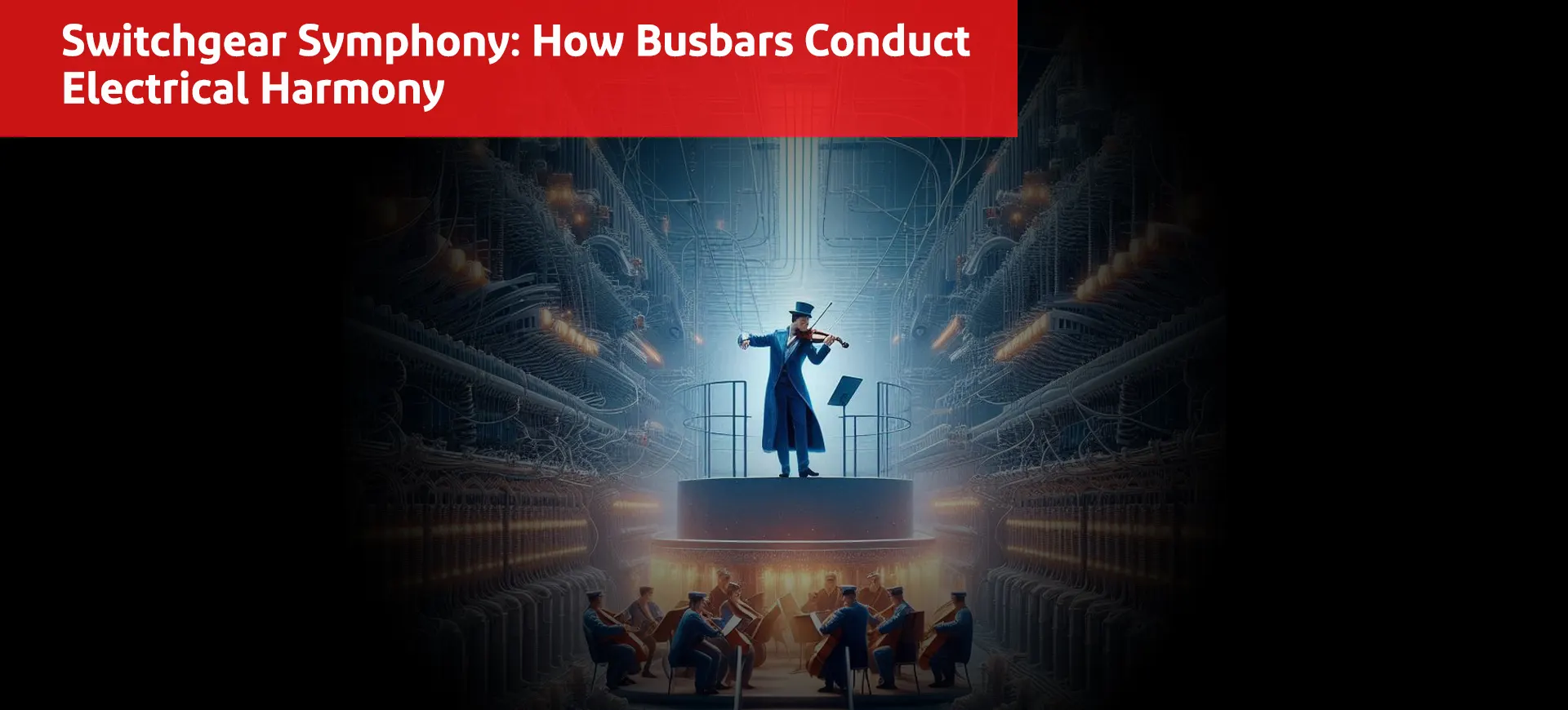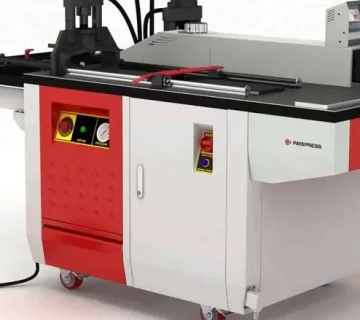In the vast and intricate world of electrical distribution, few components play as pivotal a role as the busbar. Much like the backbone of an orchestra, busbars conduct the electrical “melody” that powers industrial plants, commercial buildings, and residential complexes. These robust, yet often overlooked, components are the unsung heroes of efficient and reliable power distribution. The rise of advanced machines, like the busbar bending machine, automatic punching machines, and busbar cutting machines, has transformed busbar fabrication into a precise and efficient process. This article delves into the world of busbars, highlighting how modern technology has harmonized their production and application.
What Is a Busbar?
A busbar is a metal strip or bar, typically made of copper or aluminum, that conducts electricity within a switchgear, distribution board, or other electrical apparatus. It serves as a junction for incoming and outgoing currents, allowing for efficient power distribution. Busbars are commonly used in power distribution systems to reduce the overall complexity of wiring, enhance conductivity, and minimize energy losses.
Busbars come in various sizes and are designed to handle different levels of electrical current. They can be configured in three-phase systems to manage large power loads, and their versatility makes them an essential component in industrial, commercial, and residential electrical setups.
The Role of Busbar Bender Machines
To ensure busbars fit within the confines of electrical panels or switchgears, they must be bent to precise angles and dimensions. This is where the busbar bending machine comes into play. The process of bending a busbar must be accurate and precise, as any deviation can affect electrical performance and safety.
Hydraulic Busbar Bending Machines
Hydraulic busbar bending machines are a popular choice for many manufacturers due to their power and precision. These machines apply hydraulic force to bend busbars made of copper or aluminum, ensuring clean bends without compromising the structural integrity of the busbar. Hydraulic bending also minimizes the risk of cracking or deforming the busbar, which is crucial for maintaining conductivity.
One major advantage of using hydraulic busbar bending machines is their ability to handle a wide range of busbar sizes and thicknesses. From smaller portable busbar bending machines to larger, industrial-grade models, hydraulic bending machines are versatile enough to meet various fabrication needs.
Automatic Punching Machines: Precision in Busbar Fabrication
Another crucial step in busbar fabrication is punching. Punching holes in busbars is necessary for mounting, connecting, or fastening the busbar to other components. The advent of automatic punching machines has significantly improved this process. Instead of manually punching holes, which is both time-consuming and prone to error, automatic punching machines ensure that each hole is perfectly aligned and sized.

CNC Punching Machines: Revolutionizing Fabrication
The most advanced form of automatic punching comes in the form of CNC punching machines. These machines use computer numerical control (CNC) technology to automate the punching process, allowing for precise, repeatable operations. With CNC busbar punching machines, manufacturers can create custom busbar designs that meet specific requirements, from hole placement to punching patterns. The precision of CNC punching also improves the overall quality of the busbar, enhancing its performance and lifespan.
For industries that require high volumes of busbar production, CNC punching machines are a game-changer. They minimize errors, reduce waste, and streamline the production process, resulting in lower manufacturing costs and faster turnaround times.
Cutting Busbars with Precision
Cutting is another essential process in busbar fabrication. Much like punching and bending, the cutting process must be highly precise to ensure that busbars fit within their designated enclosures and perform their function properly. Busbar cutting machines are designed to cut busbars to specific lengths without deforming or damaging the material.
CNC Busbar Cutting Machines
Similar to CNC punching, CNC busbar cutting machines use computer-controlled technology to deliver accurate cuts. These machines are capable of cutting busbars to exact dimensions, ensuring a perfect fit every time. The use of CNC technology in cutting ensures minimal material waste, making it an efficient solution for busbar manufacturers.
The 3-in-1 Busbar Machine: All-in-One Efficiency
For manufacturers looking to optimize their fabrication process, the 3-in-1 busbar machine is a versatile and efficient solution. As the name suggests, this machine combines three essential functions—cutting, punching, and bending—into one compact machine. This reduces the need for multiple machines, saving space, time, and money.
Advantages of the 3-in-1 Busbar Machine
- Space-Saving Design: By combining three processes into one machine, manufacturers can save valuable floor space in their workshops or factories.
- Increased Efficiency: The 3-in-1 machine reduces the time it takes to switch between processes, allowing for faster production cycles.
- Cost-Effective: Investing in a single machine that performs multiple functions is more economical than purchasing separate machines for each task.
For manufacturers looking to streamline their busbar fabrication process, the 3-in-1 busbar machine is an ideal choice.
Portable Busbar Bending Machines: Flexibility on the Go
In addition to large, industrial-grade machines, there is a growing demand for portable busbar bending machines. These compact machines are designed for on-site fabrication, allowing technicians to bend busbars directly at the installation site. Portable hydraulic busbar bending machines offer flexibility without sacrificing power or precision.
Busbar Machine Manufacturers: Meeting Industry Demands
As the demand for efficient and reliable power distribution systems grows, so does the need for high-quality busbar machines. Leading busbar machine manufacturers are continually innovating to create machines that meet the evolving needs of the electrical industry.
What to Look for in a Busbar Machine Manufacturer
- Reputation for Quality: The best manufacturers produce machines that are durable, reliable, and capable of performing precise operations.
- Comprehensive Product Line: Look for manufacturers that offer a wide range of machines, including busbar bending machines, automatic punching machines, and busbar cutting machines.
- After-Sales Support: Ensure that the manufacturer provides comprehensive support, including installation, training, and maintenance services.
The Future of Busbar Fabrication
As technology continues to advance, the future of busbar fabrication looks bright. The integration of CNC technology in busbar cutting, and punching has revolutionized the industry, allowing for greater precision, efficiency, and customization.
Looking ahead, we can expect even more innovations in busbar machines, including increased automation and the use of AI to further optimize the fabrication process. These advancements will make it easier for manufacturers to meet the growing demand for efficient power distribution systems, both in developed and emerging markets.
Conclusion
In the grand symphony of electrical distribution, busbars play a vital role in conducting the flow of energy. With the help of advanced busbar machines—ranging from hydraulic busbar bending machines to CNC Punching Machine & CNC Cutting Machine—the process of busbar fabrication has become more efficient, precise, and cost-effective than ever before.
Whether you’re in need of a 3-in-1 busbar machine, a Workshop Busbar Machine, or a CNC busbar processing machine, the right tools can make all the difference. By investing in high-quality busbar machines, manufacturers can ensure that their busbars are not only functional but also optimized for performance and reliability.
Follow us on LinkedIn
https://www.linkedin.com/company/payapress




No comment